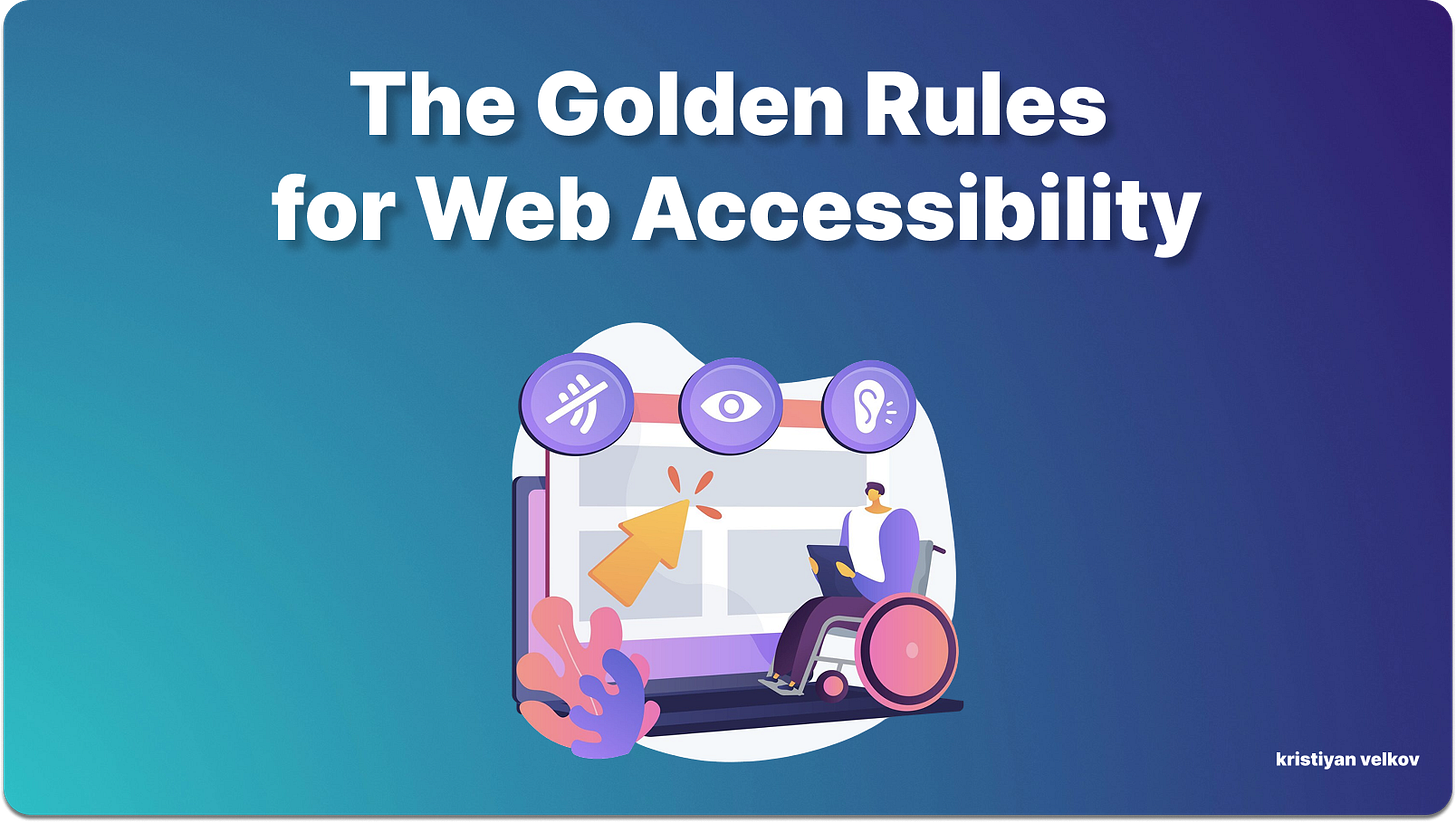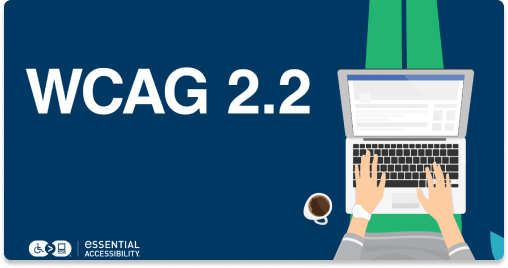The Golden Rules for Web Accessibility
Web accessibility best rules.
Web accessibility is crucial for ensuring that websites and web applications are usable by all individuals, including those with disabilities.
Here are some best practices to follow when designing and developing for web accessibility:
1. Adhere to Web Content Accessibility Guidelines (WCAG)
Follow the WCAG guidelines (currently WCAG 2.2) to ensure that your web content is accessible. WCAG provides a comprehensive set of criteria for making web content perceivable, operable, and understandable.
2. Use Semantic HTML
Using semantic HTML involves choosing HTML elements that best convey the meaning and structure of your content.
Here are some examples of semantic HTML elements:
<header> Represents a container for introductory content or a set of navigational links.
<nav> Represents a section of navigation links.
<main> Represents the main content of the document.
<article> Represents a self-contained composition in a document, such as a news article or blog post.
<section> Represents a generic section of content.
<aside> Represents content that is tangentially related to the content around it.
<figure> Represents any content that is referenced from the main content, such as images or charts.
<figcaption> Represents a caption or legend for a <figure> element.
<footer> Represents a container for the footer of a section or a page.
<time> Represents a specific period in time, like a date or a time.
// Use headings to create a content hierarchy
<h1>Main Heading</h1>
<h2>Subheading</h2>
/// Use lists to structure content
<ul>
<li>Item 1</li>
<li>Item 2</li>
</ul>
// Use buttons for interactive elements
<button>Click me</button>
// Navigation
<nav>
<ul>
<li><a href="#">Home</a></li>
<li><a href="#">About</a></li>
<li><a href="#">Contact</a></li>
</ul>
</nav>
// Main content of the document
<main>
<h1>Welcome to Our Blog</h1>
<article>
<h2>Article Title</h2>
<p>Article content goes here...</p>
</article>
<!-- More articles here -->
</main>
// Generic section of content
<section>
<h2>Our Services</h2>
<p>Explore our range of services...</p>
</section>Using these semantic elements in your HTML code helps improve the structure and accessibility of your web content by providing clear cues to assistive technologies and search engines about the meaning and relationships between different parts of your content.
Provide Skip Links
Skip links are a crucial accessibility feature that allows users to bypass repetitive navigation and jump directly to the main content on a web page. These links are particularly helpful for users who rely on keyboard navigation or screen readers. Here’s how to implement skip links:
<a href="#main-content" class="skip-link">Skip to Content</a>Accessible Forms
- Use semantic HTML elements to structure your forms, such as <form>, <input>, <label>, <fieldset>, and <legend>. These elements help convey the form’s purpose and improve screen reader compatibility.
- Use the <label> element to label form controls. Associate labels with their corresponding inputs using the for attribute on the label and the id attribute on the input.
<label for="name">Name:</label> <input type="text" id="name" name="name">- Ensure that labels are descriptive and provide context. Avoid using labels like “Field 1” or “Text Box.”
- Use Valid and Specific Input Types
- Choose appropriate input types (e.g., text, email, number) to ensure that users receive the correct keyboard and assistive technology experiences.
Keep reading with a 7-day free trial
Subscribe to Front-end World to keep reading this post and get 7 days of free access to the full post archives.




